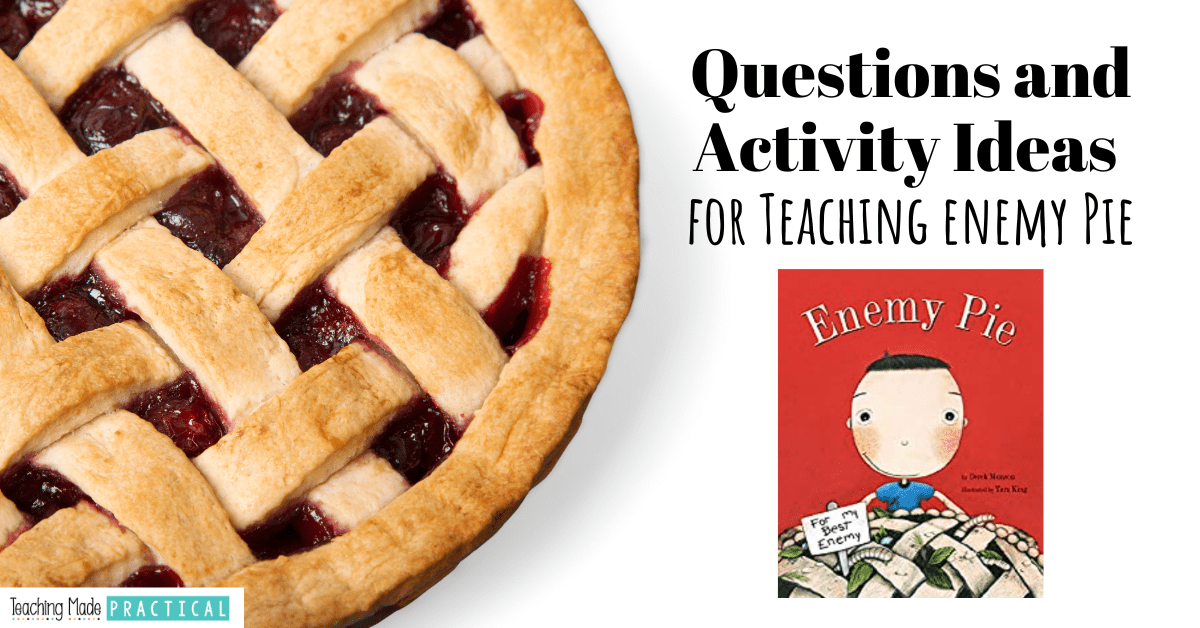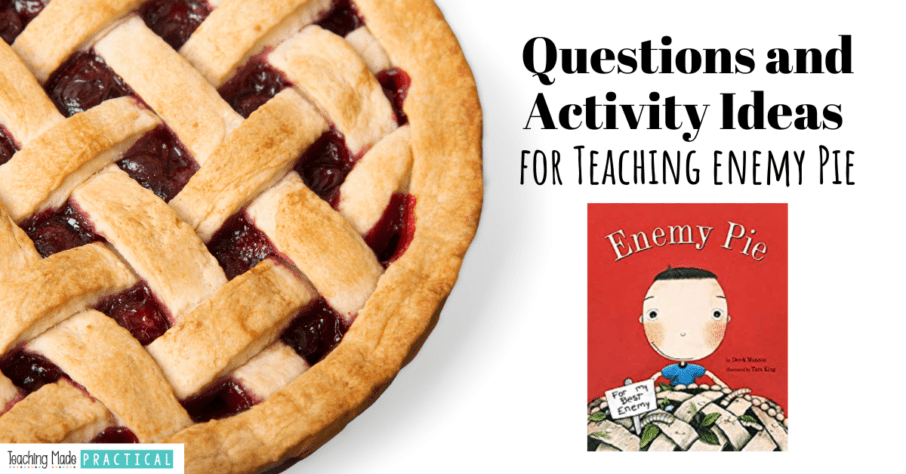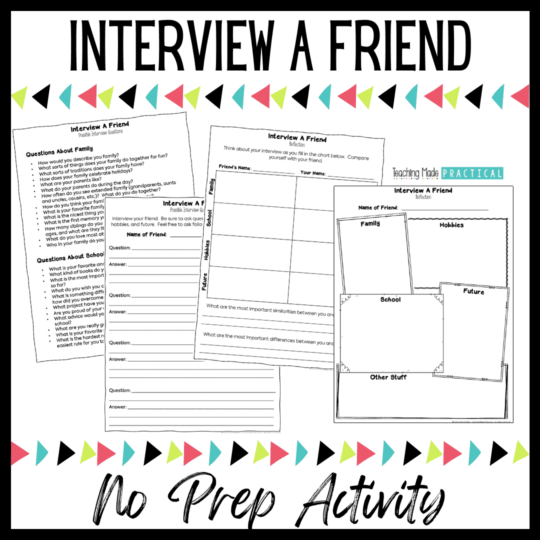
Enemy Pie is a sweet story of friendship where a boy finds out that his enemy is not really an enemy after all, but a friend. This theme of friendship makes it a great book to read aloud at the beginning of the school year to help you set a positive classroom culture in your 3rd, 4th, or 5th grade classroom. But since this message of friendship needs to be reinforced all the time, it can be read anytime throughout the school year!
The text in this book is not complicated, so it is often used in younger grade levels. However, the themes of this book are very appropriate and useful for upper elementary students.
Below, find questions and activity ideas to use in your 3rd, 4th, and 5th grade lesson plans when reading Enemy Pie.
Some of the links are affiliate links, so if you click the link and choose to buy I might get a small compensation at no cost to you.
Summary of the Read Aloud Enemy Pie
A young boy is ready for the best summer ever. But Jeremy Ross moves into the neighborhood and becomes the boy's number one enemy.
The boy tells his father about his enemy problem, and his dad suggests making enemy pie. It's a secret recipe. Dad makes the pie, and then tells his son that, in order for enemy pie to work, he has to spend the whole day with his enemy - and being nice!
The two boys play together all day, and the boy realizes he doesn't want Jeremy to eat the enemy pie after all. But come to find out, dad made a delicious pie, and they all enjoy it together.
Before, During, and After Reading Questions for Enemy Pie
Before Reading Questions
- What is an enemy? Do you have any enemies? Why are they your enemies?
- What do you think enemy pie is?
- Based on the title and illustrations, what problems do you think the main character might face? What are some possible solutions?
During Reading Questions
- What do you think is in enemy pie? What do you think will happen to Jeremy when he eats the pie?
- Why do you think Jeremy acts confused when the main character acts him to play?
- How do you think this story will end? Why?
After Reading Questions
- How did the main character change throughout the story? What caused that change?
- Why did the boy try to stop Jeremy from eating the pie?
- What do you think the author wants you to learn about friendship after reading this story?
Activity Ideas to Use In Your Enemy Pie Lesson Plans
In Enemy Pie, the narrator turned an enemy into a friend simply by spending time with him and getting to know him! Replicate this in your classroom by having students interview one another.
This, along with the Enemy Pie read aloud, makes a great back to school activity. Walk students through an interview process by helping them brainstorm questions, facilitating the interviews, and providing reflection activities.
This No Prep Student Interview Resource will help your students throughout the entire interview process, and it includes several reflection activities that have students compare and contrast themselves with their partner, answer reflection questions, and create a poster about their friend.
Make A Pie!
There are all sorts of ways you can "make a pie" with your students and connect it to the book.
- Have students write a recipe for what they would include an enemy pie. Refer back to the book to remind students what the narrator thought would be in the enemy pie.
- Have students write a recipe for a "friendship" pie. What qualities make a good friend?
- Make a real pie together as a class and have students write a how to paper to go along with it! Use a no bake pie like this one for convenience. Add some edible versions of things that the narrator thought would be in enemy pie, like gummy worms, edible chocolate rocks, and edible ladybugs. You can make this lesson even more memorable with these real edible larva!
Character Trait Lesson Focusing on Traits of Enemies/Friends
Have students brainstorm the character traits that make up a good friend. Then, have students think about what character traits their enemies might have.
You can use this list of character traits to help expand your students' character trait vocabulary.
After brainstorming character traits together, have students write about the 3 most important character traits they want their friends to have, and why.
Think About Theme
Since there is a clear message that the author is trying to teach through this book, Enemy Pie is great for teaching theme!
Ask students questions that help focus on the theme of the book.
- What do you think the author wants you to learn?
- How did the character change from the beginning of the story to the end of the story?
- What can you apply from this story to an enemy in your life?
Then, provide a few options for the theme of the story, and have students choose the best theme and defend their reasoning. Some possible themes you could use are:
- Whenever you don't like someone, make them a pie.
- When you get to know someone, you might like them better.
- If you don't know what to do, ask an adult.
You might also like some of these other back to school ideas.
Never Stress Over Sub Plans Again!

Make copies, find a fiction book, and you'll be ready for any emergency that comes your way!



